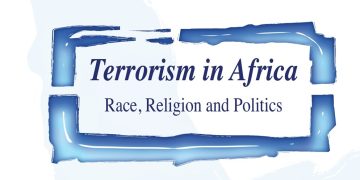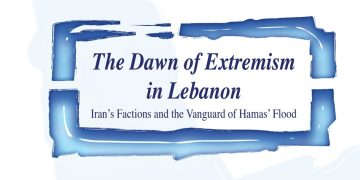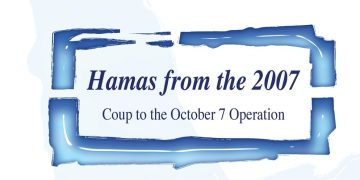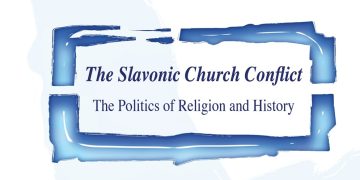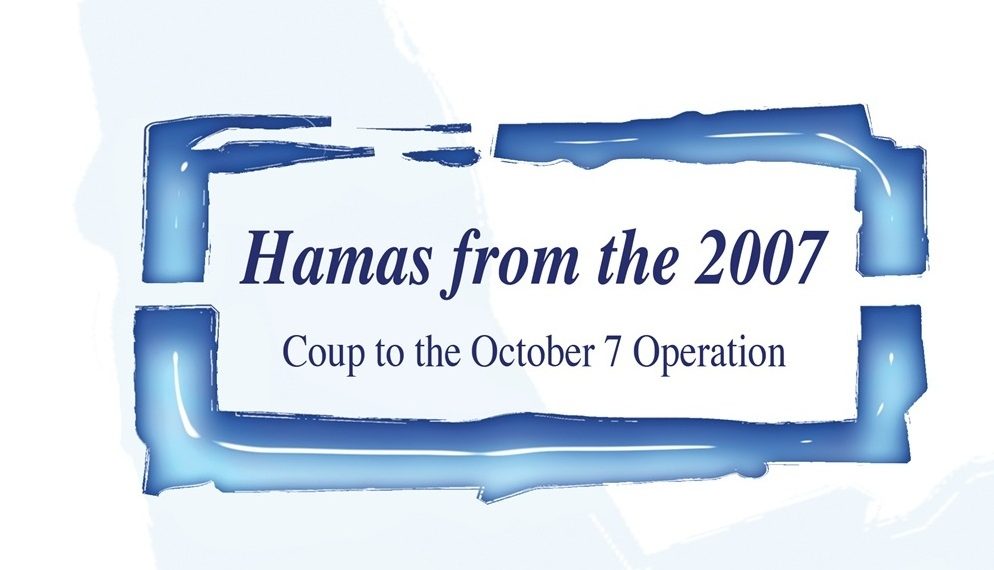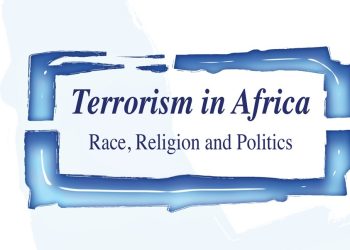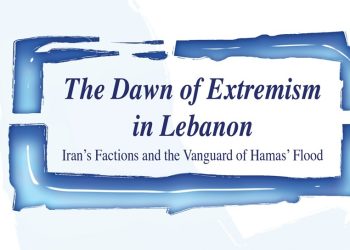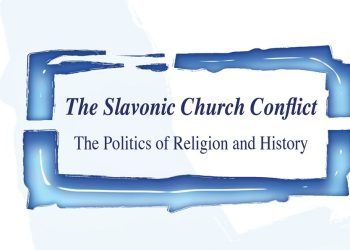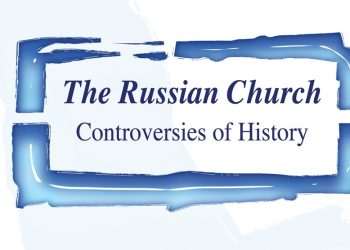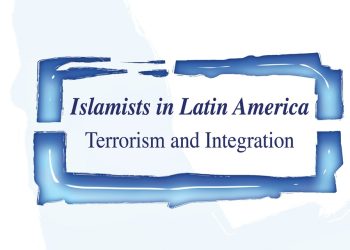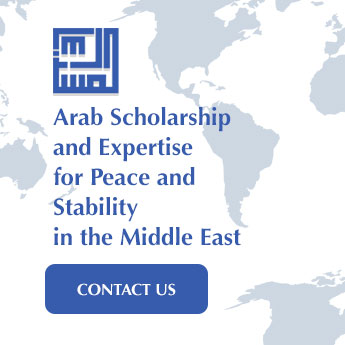March 2024
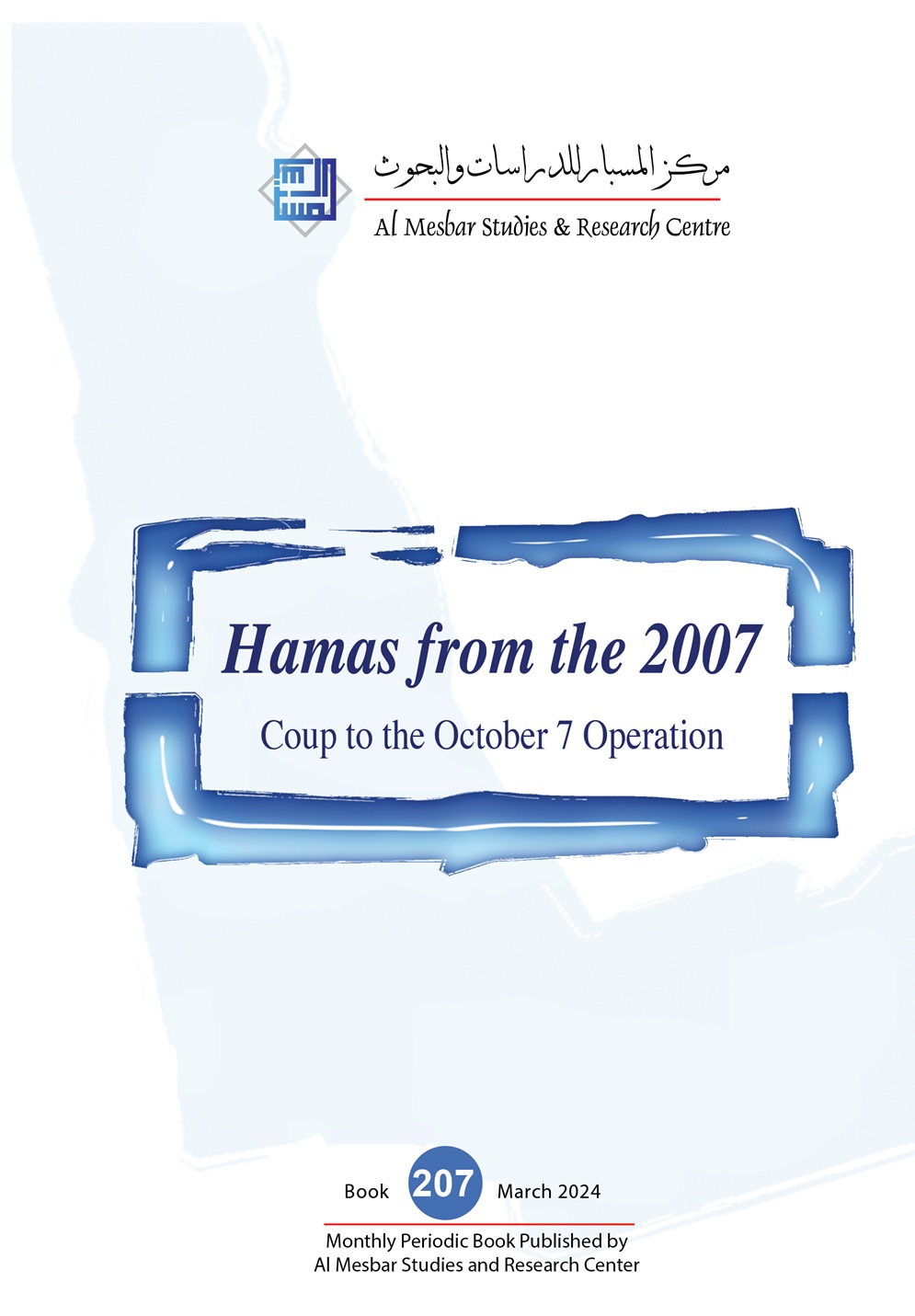 In its 207th book, “Hamas from the 2007 Coup to the October 7 Operation,” published March 2024, the Al-Mesbar Studies and Research Center examines Hamas’ governance of the Gaza Strip from the 2007 coup until the October 7, 2023 attacks. It analyzes the internal conditions following the coup against the Palestinian Authority and how these contributed to the decline of Palestinian unity, especially after Hamas rejected the PA as the sole legitimate representative of the Palestinian people and national decision-maker.
In its 207th book, “Hamas from the 2007 Coup to the October 7 Operation,” published March 2024, the Al-Mesbar Studies and Research Center examines Hamas’ governance of the Gaza Strip from the 2007 coup until the October 7, 2023 attacks. It analyzes the internal conditions following the coup against the Palestinian Authority and how these contributed to the decline of Palestinian unity, especially after Hamas rejected the PA as the sole legitimate representative of the Palestinian people and national decision-maker.
The book explores Hamas’ organizational structure, its military wing, and its external connections in Egypt, Jordan, Lebanon, Libya, and Iraq. It also evaluates Hamas’ external relations, the influence of ideological choices, and the role of national interests as reflected in the movement’s founding documents, from its Charter to the 2017 interim document.
The violent terrorist offensive, officially designated by Hamas as the “Al-Aqsa Flood,” as well as the harsh response it engendered, mark the culmination of several years characterized by political miscalculations, ideological stagnation, strategic rigidity, and increasing dependence on foreign powers. These challenges are intertwined with the legitimate tensions of the Palestinian people and their efforts to sustain and revive the two-state solution. October 7th drew the region into a protracted conflict that benefits Islamist groups and has led to a violent response that exacted a heavy civilian toll.
This project, presented in two parts, investigates the history leading to October 7 by examining Hamas’ organization and its authoritarian rule over Gaza for 15 years. It prepares for a detailed study of the operation itself, the debates over how best to classify Hamas, its regional and international relationships, and its potential implications for the future of the Palestinian polity.
The opening study, contributed by Palestinian researcher and dissident Hamas leader Ahmed Youssef, provides an insider’s perspective on Hamas and the political reality after 2006. He analyzes the effects of the 2006 Palestinian legislative elections on Hamas’ progress in Gaza and the West Bank, its relationship with the Palestinian Authority, and the consequences of Hamas’ control over Gaza, including its authoritarian governance. Youssef describes the atmosphere during Hamas’ 2007 takeover of Gaza. He also discusses Hamas’ attempts to build relations with the international community and analyzes the clandestine negotiations that failed to convince Hamas to accept a two-state solution. He recalls President Mahmoud Abbas’ efforts to condemn attempts to legitimize a “state with temporary borders” and the efforts to isolate Gaza from the Palestinian Authority’s state-building project. Youssef notes that after the Shalit deal in 2011, military figures gained dominance within Hamas, increasing their political influence beyond that of their civilian counterparts.
Hamas’s control over Gaza since 2007 has had major social, cultural, and security repercussions. Nasser Atallah, member of the General Secretariat of the Palestinian Writers’ Union, focuses on how Hamas expanded its influence. Despite Hamas’ efforts to impose its social, religious, and cultural vision, Atallah describes it as remaining a “closed movement,” both socially and ideologically insular.
Palestinian researcher Anwar Rajab Khalil, Director of the Extremism and Intellectual Security Studies Unit at the Palestine Institute for National Security Research, analyzes Islamist movements’ rejection of notions of homeland and citizenship, emphasizing Hamas’ relationship with the international Muslim Brotherhood. His study centers on Hamas’ “Empowerment Project” (mashru’ at-Tamkeen) as a strategic objective within the broader Brotherhood framework. Facing both internal and external pressures, Hamas has pursued parallel paths to de-emphasize its Brotherhood ideology, exemplified by the 2017 “General Principles and Policies Document,” that omits any reference to its ideological or operational ties to the Brotherhood. This contrasts with the 1988 Charter, which explicitly identifies Hamas as the Brotherhood’s Palestinian branch. Khalil argues that the 2017 document was not a product of intellectual development or pressure but rather a tactical shift to further empowerHamas.
Continuing the analysis of the “General Principles and Policies Document,” Turkish researcher Muhammad Zahid Gul, director of the Sharqiyat Research Center in Istanbul, observes that despite Hamas’s pretensions at “reform,” it follows the typical path of Islamist movements, especially those originating in the Muslim Brotherhood. He explains that Hamas operations in Gaza and the West Bank are dictated by its ideological perspective. Although the 2017 document gestures towards a two-state solution based on the 1967 borders, Hamas has not transitioned from Islamization to secularization and political realism in practice.
Thabet Al-Amour studies Hamas’ organizational structure, noting its similarity to the Muslim Brotherhood’s typical framework, especially as inherited from Egypt and Jordan. This structure emphasizes “educating” both individuals and families, establishing Brotherhood branches for discussion and planning, and using mass mobilization to promote group ideology and concepts.
Egyptian Islamist movement researcher Maher Farghaly examines the relationship between Hamas and the Brotherhood’s “special regime,” particularly following the events of 2011. He highlights Hamas’ role in supporting, training, and financing extremist groups in various Arab countries through its military wing, the Ezz al-Din al-Qassam Brigades. Farghaly discusses the hypothesis that Hamas’ military wing represents a special military organization closely linked to the Muslim Brotherhood’s military apparatus, cooperating in activities such as smuggling prisoners through tunnels and training terrorist groups like Aknaf Bayt al-Maqdis.
Syrian researcher Shilan Sheikh Moussa studies the political contradictions that have shaped Hamas for over a decade and their effects on its allies. She traces the relationship between Hamas and the Syrian regime since 2011. Before the Syrian conflict, their relationship was pragmatic and interest-based. However, after what she terms “the Brotherhood Spring,” of 2011, Hamas maintained a quiet opposition to the Syrian regime, straining relations until 2022. That year, Iranian-led efforts restored ties between Hamas and Syria, coinciding with Hamas’ internal elections, which saw the rise of the military wing in Gaza, with its close ties to the Iranian Revolutionary Guard, led by Yehia Al-Sinwar.
Regarding Hamas’ relations with Turkey and Iran, researcher Muthanna al-Obaidi, professor of political science at Tikrit University, describes these ties as fluctuating over time. Relations with Turkey, dating back to the Justice and Development Party’s rise in 2002, have recently grown more distant. Relations with Iran have generally stabilized, despite tensions caused by Hamas’ aforementioned stance on Syria since 2011.
Ahmed Al-Khatib analyzes Hamas’ relations with Egypt from 1987 to 2023, outlining various stages. He provides a historical analysis and proposes future scenarios following October 7, considering recent changes and the positions of key actors in the ongoing Gaza conflict.
Strategic and security studies researcher Osama Khaled examines how terrorist groups like Al-Qaeda and ISIS exploit the Palestinian issue, highlighting the risks involved. He reviews statements and publications from these groups, including Al-Qaeda’s “One Nation” (Ummah Wahidah) magazine, and provides an analytical reading. He also offers a statistical study of ISIS’s incitement activities before and after the October 7 operation.
In conclusion, Al Mesbar Center thanks all the researchers who contributed to the book and those involved in its publication, especially coordinator Maher Farghaly and project originator Muhammad Al-Haddad. We hope this project fills an important gap in the Arab intellectual library.


